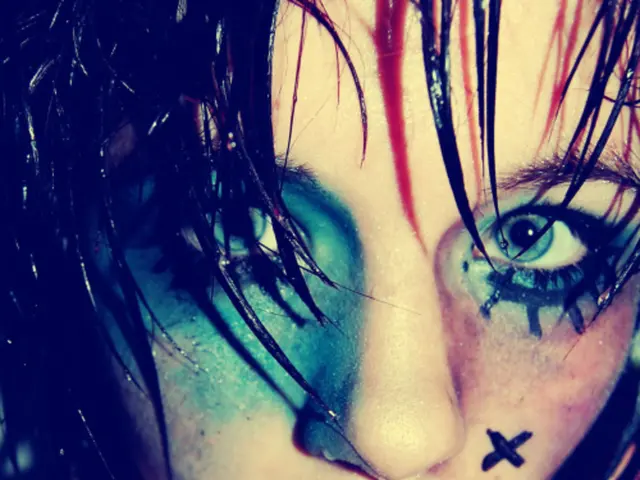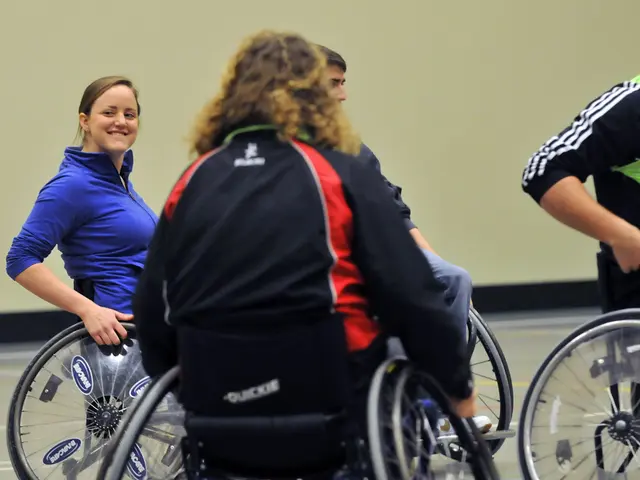Distinguishing Age Spots from Skin Cancer: A Guide to Recognition
Hey there! Let's talk about skin spots and cancer – two subjects that might seem scary, but don't be alarmed.
Age spots and skin cancer can both show up on your skin, especially on parts exposed to the sun, like your hands, face, or shoulders. But they're different beasts.
Age spots – also known as solar lentigines or liver spots – are those pesky patches that get darker than the rest of your skin. They're usually flat and smooth, not itchy or crusty, and they appear from middle age onward due to your body producing extra melanin to shield itself from sun exposure.
On the other hand, skin cancer is a type of cancer that can be dangerous if left untreated. It develops from damage caused by UV radiation or environmental factors, causing the skin cells to mutate and grow rapidly. Unlike age spots, skin cancer requires attention as it has the potential to spread to other parts of the body.
The three main types of skin cancer are basal cell carcinoma, squamous cell carcinoma, and melanoma. Actinic keratosis, a precancerous growth, might look like age spots but can become cancerous if ignored.
Now, you might wonder if age spots can transform into cancer. Nope! Actinic keratosis, though, is a different story since it can progress into cancer if left unaddressed.
Let's compare the symptoms to help you differentiate them:
Age spot symptoms
- Flat and smooth
- Yellow, brown, or gray
- Defined borders
- Vary in size from a few millimeters to centimeters
- On sun-exposed areas
Skin cancer symptoms
- Can exhibit various signs, depending on the type of cancer
- Irregular and blurred edges
- Changes in the growth's size, color, or shape
- Multiple colors on the same spot
- Pink, blue, purple, black, or brown coloring
- Raised patches or red, pale, or yellow firm patches
- Oozing, bleeding, itching, or pain
- Crusty or scaly patches
- Raised edges with a indentation in the middle
Actinic keratosis signs include:- Raised, rough, or scaly patches- Red, gray, pink, or skin-colored patches- Flat and scaly patches resembling age spots- Clustered scaly, rough bumps similar to acne- Pale or scaly patches on the lips- Horn-like growths
So, if you spot any changes that don't look right on your skin, give your healthcare professional a call. Early detection can make treatment easier and improve health outcomes. Plus, if you've got age spots and want to get rid of them, there are treatments available, such as creams, lasers, cryosurgery, microdermabrasion, or chemical peeling.
Now, don't freak out – skin cancer is preventable by limiting sun exposure, using sunscreen, and keeping an eye on your skin. But if you do spot something unusual, don't hesitate to consult a professional. Stay safe, and keep on rocking that skin! 💥🌞💪
- Age spots and skin cancer share similar locations on the body, but age spots are harmless, while skin cancer requires medical attention.
- In the field of dermatology and oncology, senior citizens are advised to regularly check for unusual skin conditions, including melanoma, a dangerous type of skin cancer.
- Science provides various medical treatments for skin conditions such as age spots, melanoma, or precancerous growths like actinic keratosis, which include creams, lasers, cryosurgery, microdermabrasion, or chemical peeling.
- Awareness of health-and-wellness and skin-care is crucial in preventing and early detection of skin cancer, which is caused by UV radiation or environmental factors and may exhibit various signs depending on the type.
- Regular monitoring and addressing skin-conditions, including common skin-spots and potential skin cancers, falls under the umbrella of a comprehensive approach to personal health and wellness.








